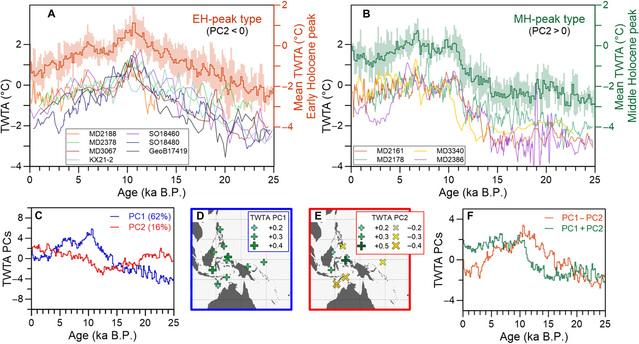Haowen Dang1, Zhimin Jian1,*, Yue Wang1, Mahyar Mohtadi 2, Yair Rosenthal 3, Liming Ye 4, Franck Bassinot 5 and Wolfgang Kuhnt 6
1 State Key Laboratory of Marine Geology, Tongji University, Shanghai 200092, China.
2 MARUM-Center for Marine Environmental Sciences, University of Bremen, 28359 Bremen, Germany.
3 Department of Marine and Coastal Science and Department of Earth and Planetary Sciences, Rutgers University, New Brunswick, NJ 08901, USA.
4 Key Laboratory of Submarine Geosciences, Second Institute of Oceanography, Ministry of Natural Resources of China, Hangzhou 310012, China.
5 Laboratoire des Sciences du Climat et de l’Environnement/IPSL, CEA-CNRS-UVSQ, University Paris-Saclay, 91198 Gif-sur-Yvette, France.
6 Institute of Geosciences, Christian-Albrechts-University, D-24118 Kiel, Germany.
Abstract:
Dynamics driving the El Niño–Southern Oscillation (ENSO) over longer-than-interannual time scales are poorly understood. Here, we compile thermocline temperature records of the Indo-Pacific warm pool over the past 25,000 years, which reveal a major warming in the Early Holocene and a secondary warming in the Middle Holocene. We suggest that the first thermocline warming corresponds to heat transport of southern Pacific shallow overturning circulation driven by June (austral winter) insolation maximum. The second thermocline warming follows equatorial September insolation maximum, which may have caused a steeper west-east upper-ocean thermal gradient and an intensified Walker circulation in the equatorial Pacific. We propose that the warm pool thermocline warming ultimately reduced the interannual ENSO activity in the Early to Middle Holocene. Thus, a substantially increased oceanic heat content of the warm pool, acting as a negative feedback for ENSO in the past, may play its role in the ongoing global warming.
Full Article:https://advances.sciencemag.org/content/6/42/eabc0402



